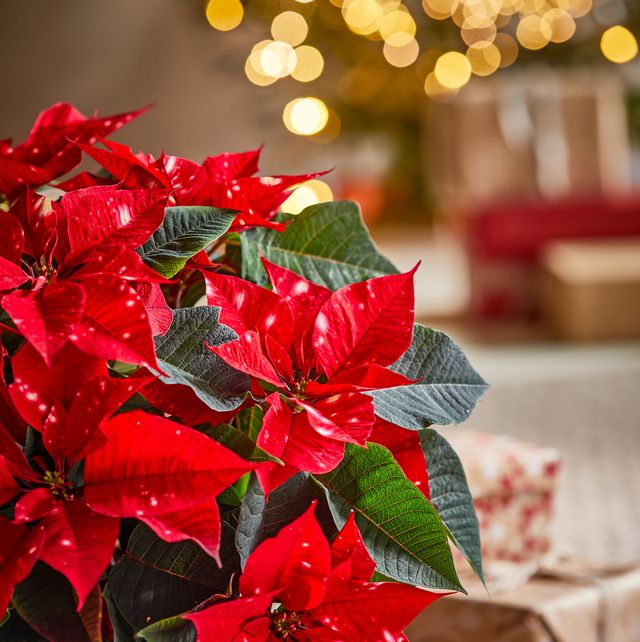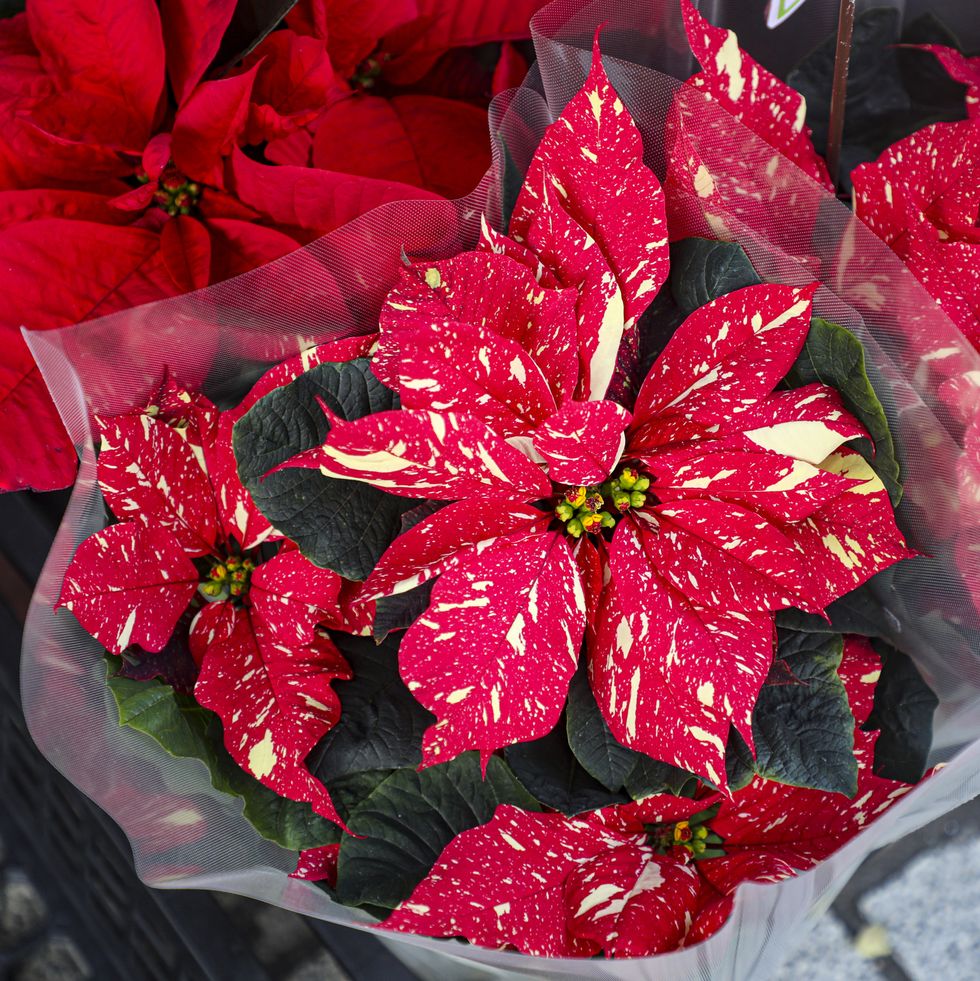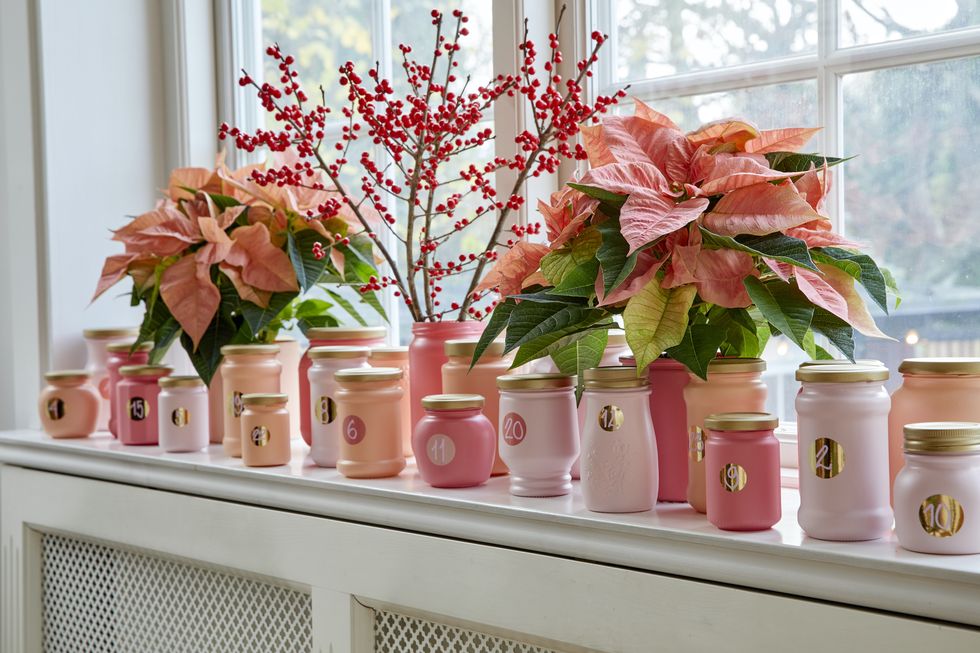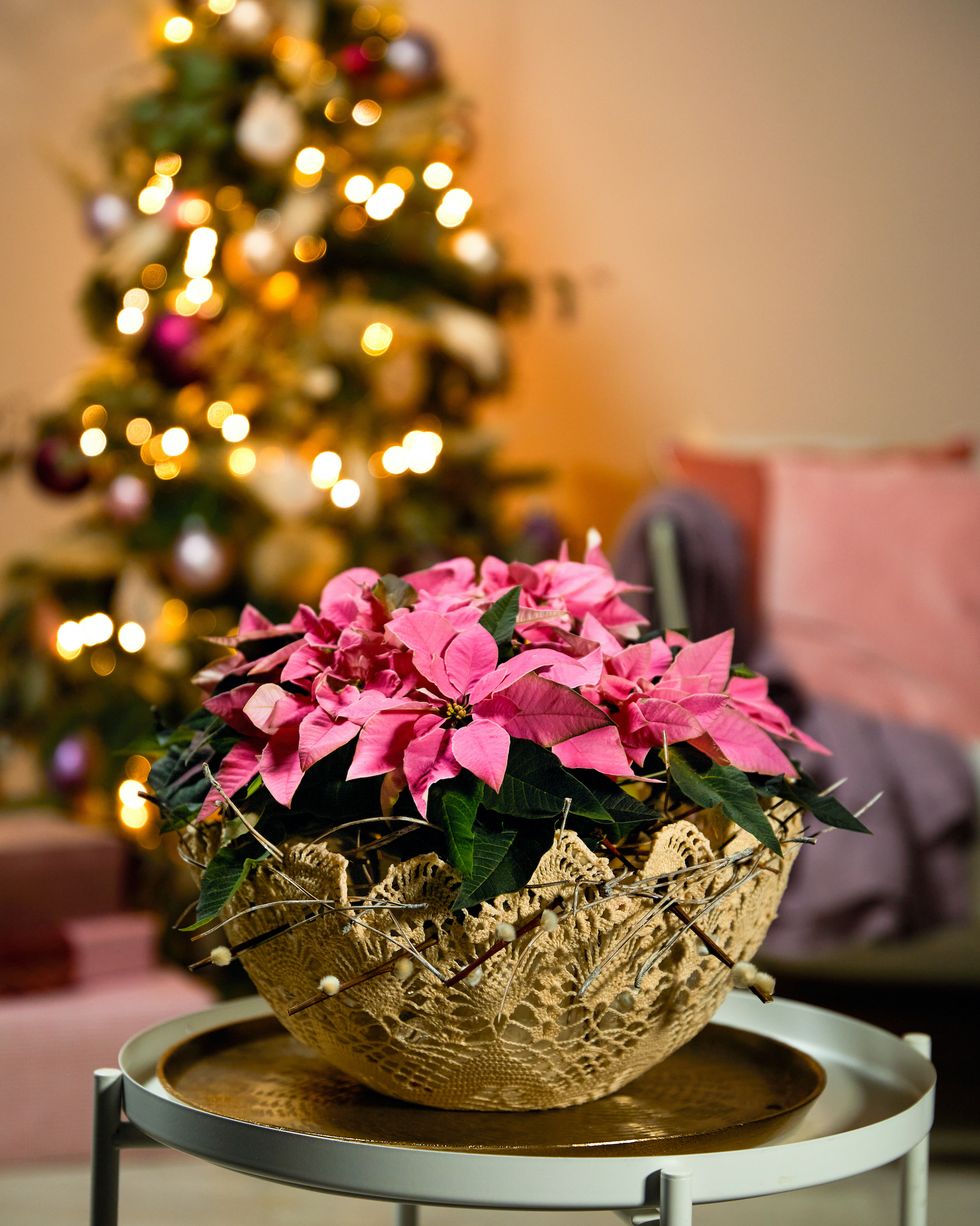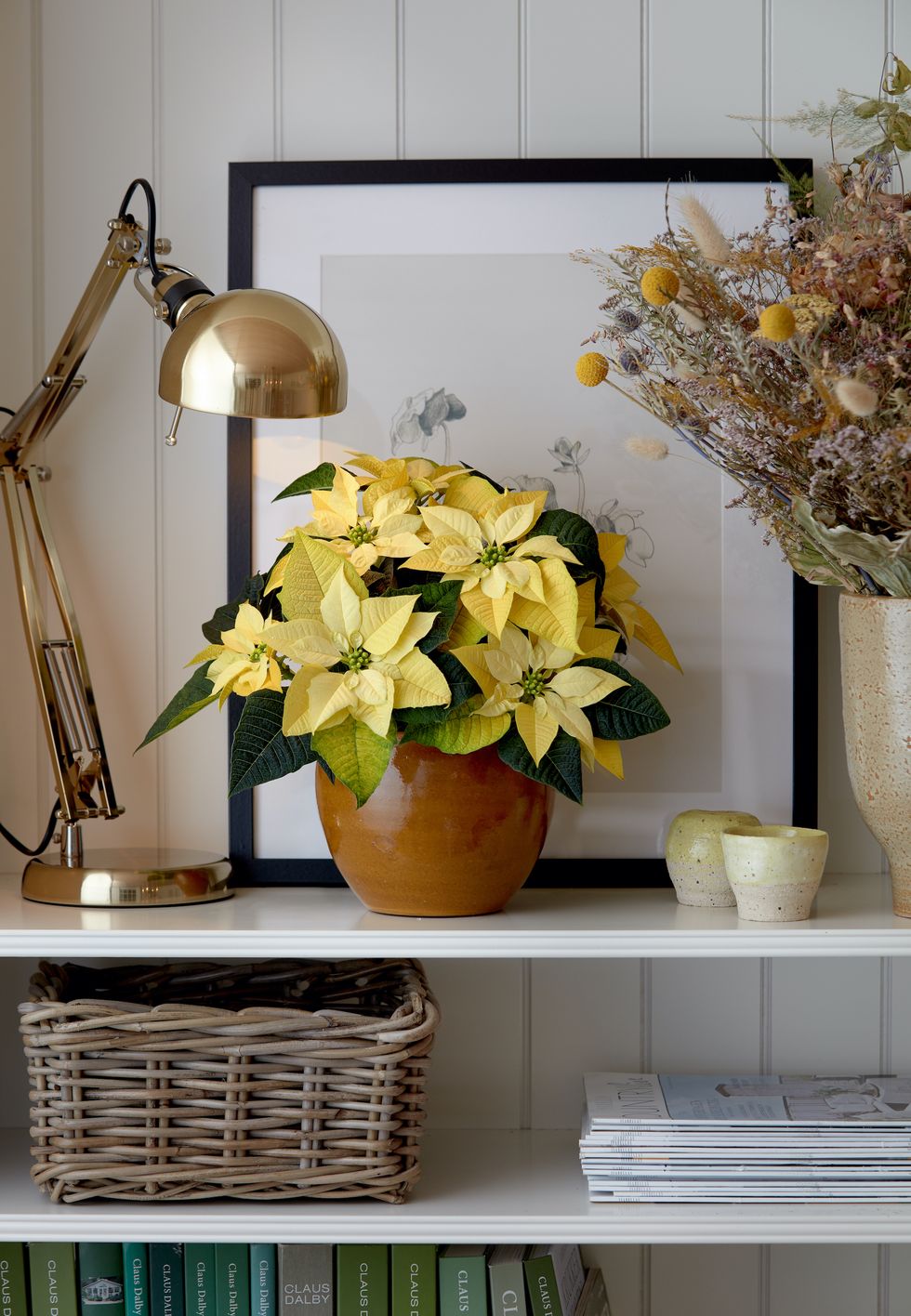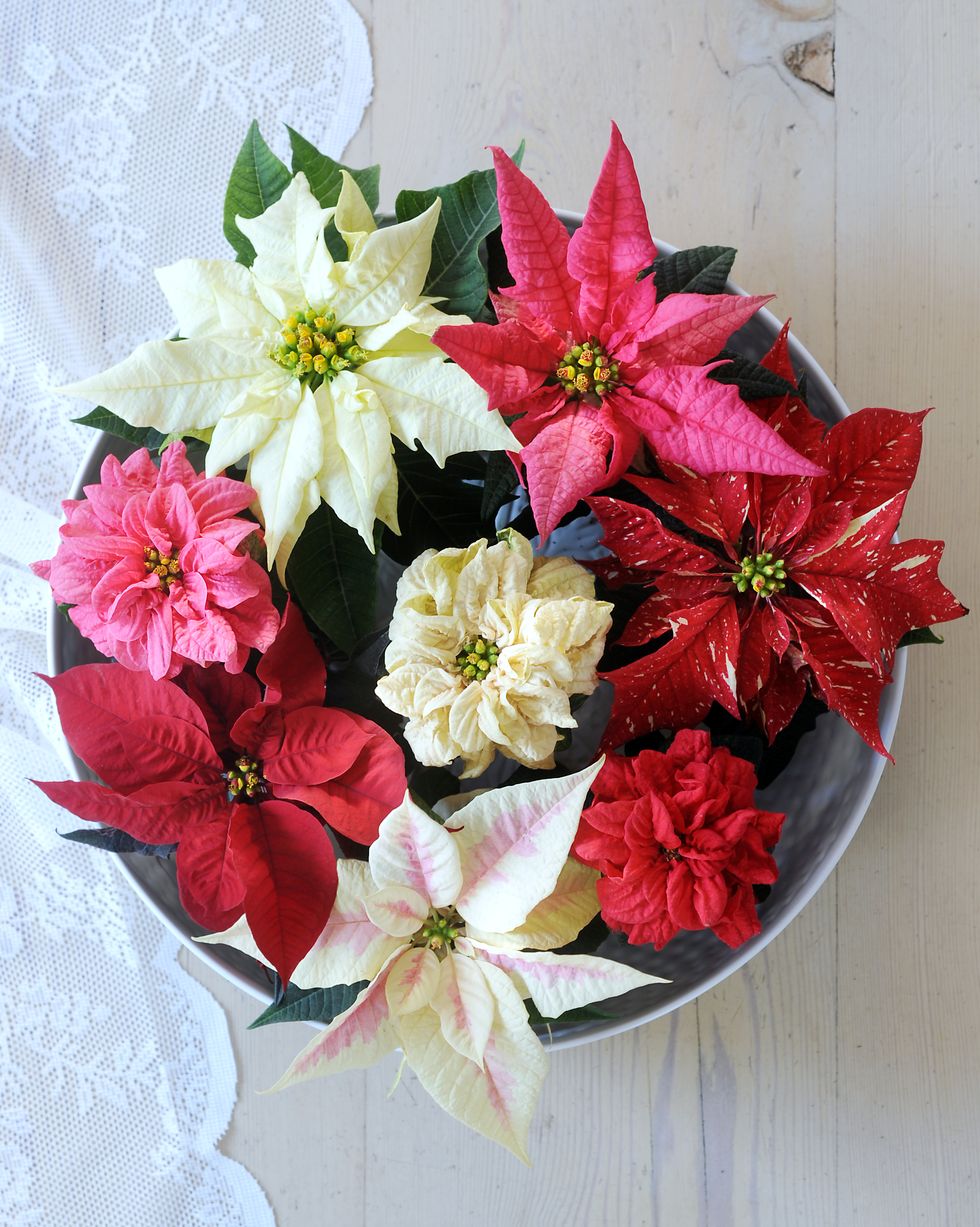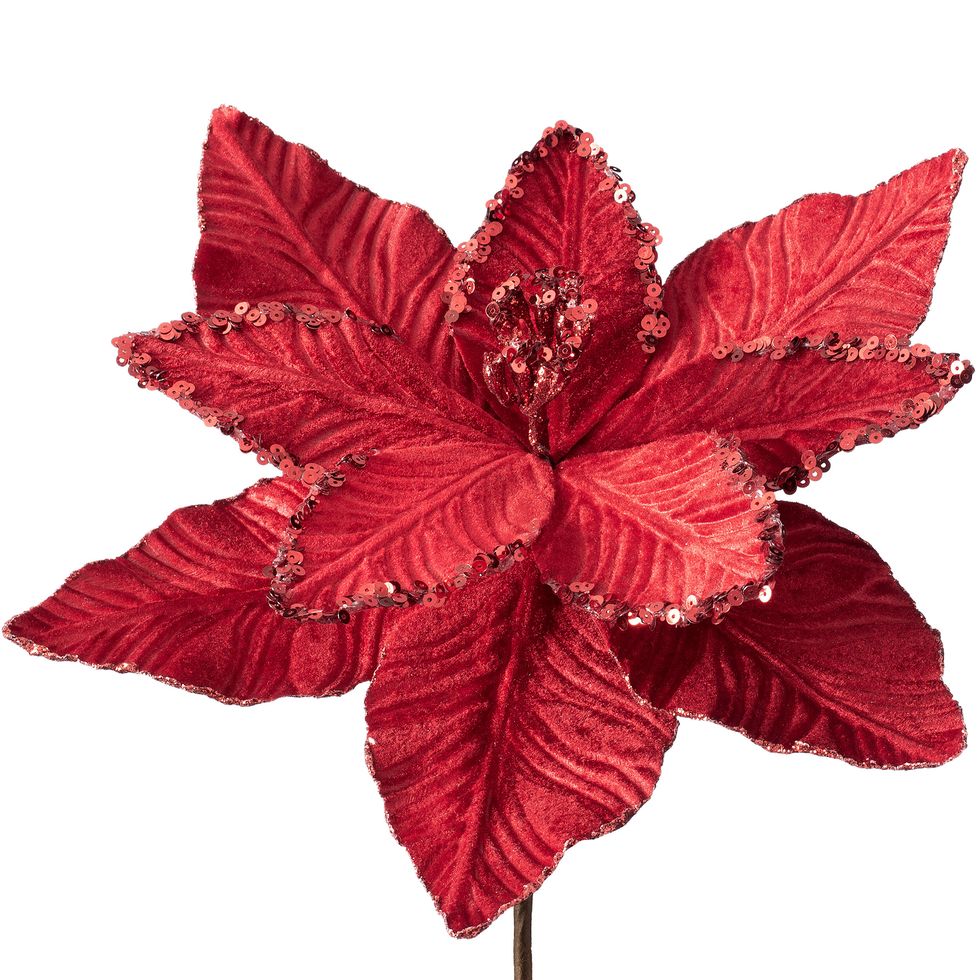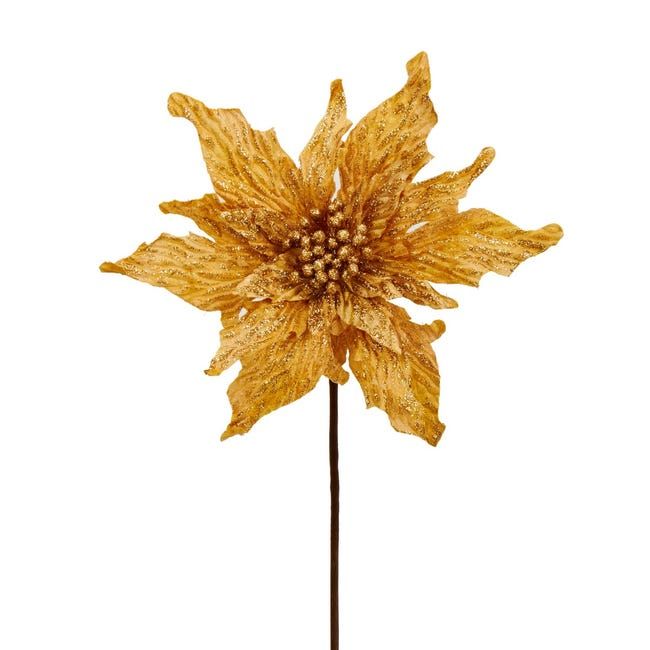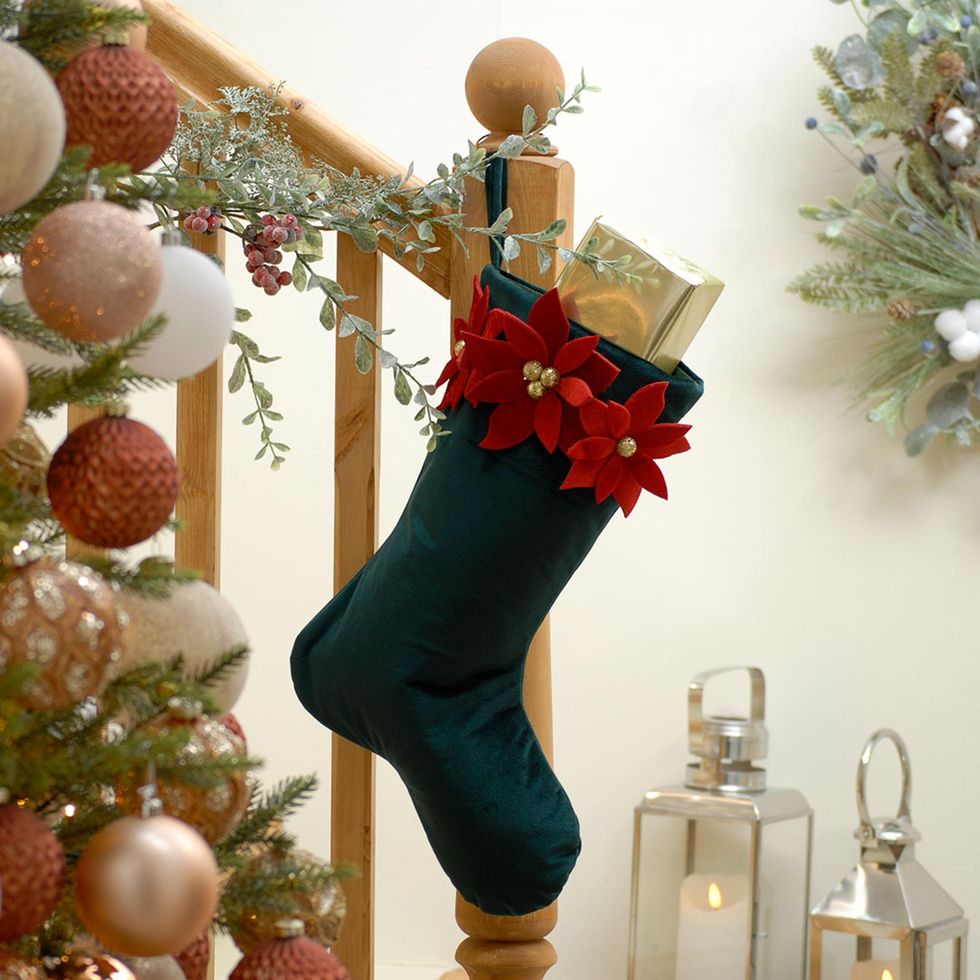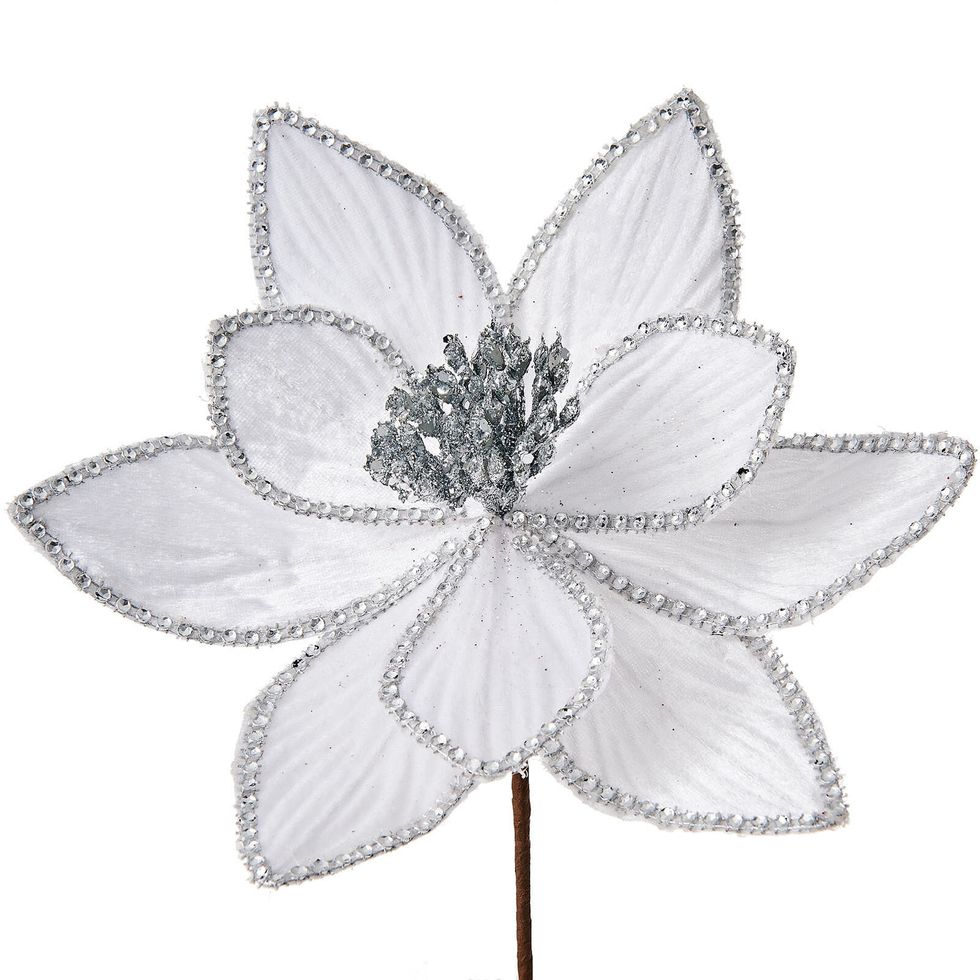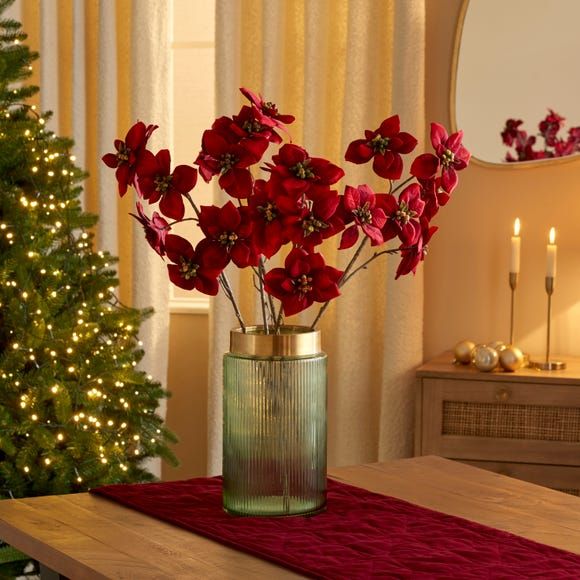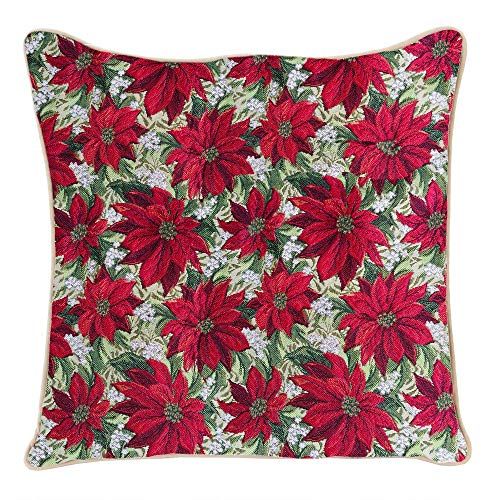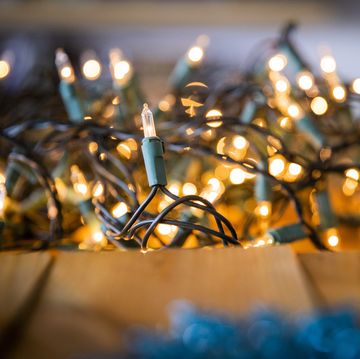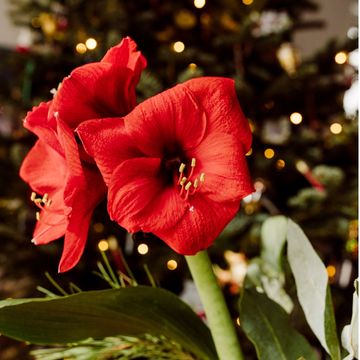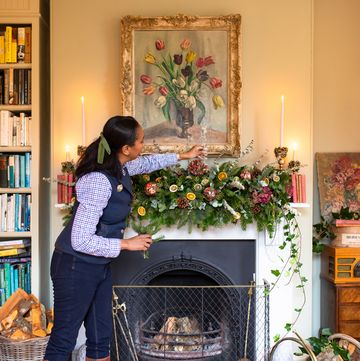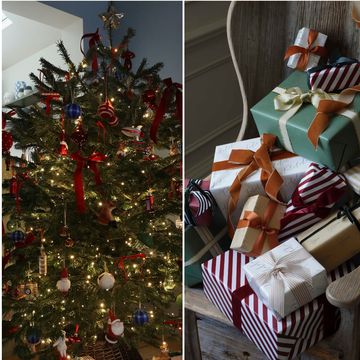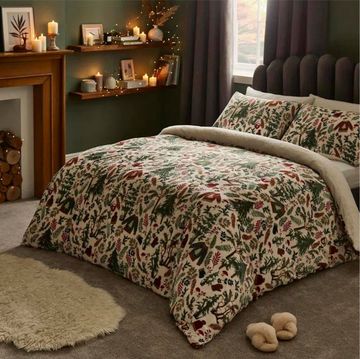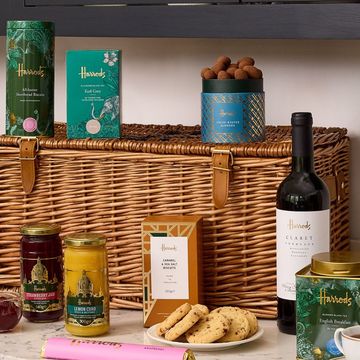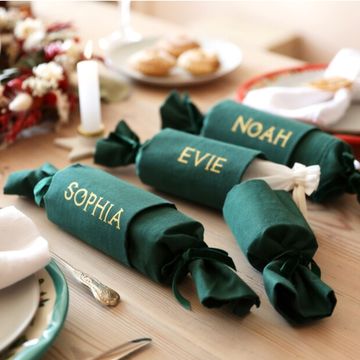Poinsettia (botanical name: Euphorbia pulcherrima) has certified itself as the UK’s number one houseplant over the Christmas season.
Also known as the Christmas Star flower, the poinsettia originates from Mexico, with over eight million plants sold in the UK every year. Guaranteed to bring Christmas cheer, poinsettia flowers from mid-November through to January and is the ultimate festive decoration for the home, aside from the Christmas tree, of course.
Once Christmas is over, you are free to pop yours on the compost heap or into the recycling bin, use as a cut flower, or you can try to get your poinsettia to bloom again for the following year.
The most widely available poinsettia plant is red – the traditional red foliage has been used to enhance homes during the festive season for centuries. But specialist poinsettia breeders have been hard at work over the past few decades in creating more than 150 different varieties, including beautiful pinks, oranges, creams and whites. In fact, poinsettias in warm shades such as apricot, rose, pink or salmon delight homes from as early as October.
It probably comes as no surprise that red poinsettias are the bestselling of all, followed by white and cream-coloured varieties. This is followed by bicoloured and speckled cultivars, as well as poinsettias of the pink variety.
With star-shaped leaf bracts, poinsettias have become known as Christmas Stars in many other languages, including Stella di Natale in Italian and Weihnachtsstern in German, while in Mexico they're also referred to as Flowers of the Holy Night.
The large colourful bracts of the poinsettia are often mistaken for flower petals, but they are in fact leaves. The flowers are actually the tiny, yellow berry-like structures at the centre of each leaf bract, which are called cyathia.
Poinsettias often have a reputation for being a little tricky to care for, but if you follow a few golden rules, your plant will thrive over the Christmas period and beyond.
Poinsettia care: 15 golden rules
Buying poinsettias
1. Typically, most supermarkets scoop poinsettias in with flowers, placing them by the front door to tempt customers on the way in or out. But, you should never buy a poinsettia sat next to a set of automatic doors that open every 30 seconds. Why? Because it will have been damaged by those UK winds it never had to experience in Mexico. Exposure to draught or temperatures below 12 degrees Celsius will cause damage. Although it's not visible at first, it may cause your poinsettia to drop its leaves soon after being brought home.
2. A healthy poinsettia plant will have intact bracts. If the little yellow buds between the coloured bracts – the actual flowers – still look tight, then you'll know that the quality of the poinsettia plant is good.
3. If possible, check the soil before buying. It should be neither dripping wet nor totally dry, and if it is, it probably hasn't been given proper TLC so it might not last in your care.
4. Finally, when you've chosen and bought your poinsettia, make sure to wrap it up in paper for the journey home to protect it from draughts and temperatures below 12 degrees Celsius. Poinsettia is a sensitive plant, so taking this extra precaution will protect it from damage that is initially invisible but can lead to a premature loss of leaves after a few days.
How do you take care of a poinsettia indoors?
5. Poinsettias need warmth and light. It can be kept close to a radiator but it must be kept away from draughts (that means NO fireplaces, open doorways, open windows or breezy hallways). If it's too draughty, this plant may start to lose its leaves. Try to place poinsettias in a sheltered spot.
6. A temperature between 15 and 22 degrees is ideal, making these poinsettias well suited to bedrooms and living rooms. Sufficient light is important for the plant to grow and thrive (poinsettias prefer a light spot rather than full shade). The usual advice is to keep plants out of direct sunlight to protect their leaves from burning, but in the winter months, this shouldn't be a problem, so it's fine to place your poinsettia by a south-facing window.
Watering a poinsettia plant
7. Poinsettias prefer soft water, they don't like hard water. Rainwater is naturally soft and low in minerals like lime, and therefore perfect for plants – collect it outside to water your poinsettias. 'In regions with hard drinking water, you could reduce the mineral content of tap water by boiling it or letting it stand for a day. This deposits the minerals that make the water hard. You can also mix tap water with distilled water or use a water filter. Tip: If you use a tumble dryer, you can also use the water from the drying process to dilute water that is too hard,' the plant experts at Stars for Europe advise.
8. Poinsettias don't like a lot of water. Always remember that the plant's root bale should neither dry out nor be drenched. Overwatering can quickly lead to waterlogging, which in turn causes root rot and leaves you with a dead houseplant.
9. You should get into the habit of inspecting its leaves. If they're turning yellow or falling off, you're probably not watering it right. Much like the case with orchids, many flower enthusiasts mean well but they often overwater poinsettias when they only really need a little.
10. You should water your poinsettia plant when the soil is noticeably dry. This could be every day in the case of a plant near a radiator in a dry room, or only every second or third day in other spots. How to check? Insert your finger and check it's evenly dry at a depth of two centimetres, or carefully lift up the plant; if it feels light, it's time to water. Mini poinsettias should be checked every day. You can also water these plants by soaking them from below, which saturates the soil more than normal watering (one dip per week should do).
11. Poinsettias prefer room temperature water, and smaller pots need watering more often than big ones because they dry out faster. For a standard pot with a diameter of 13cm, give it around 100 millilitres of water – about as much as you'd fit in a champagne flute. This prevents large pores in the soil from clogging up and waterlogging. Mini poinsettias in a 6cm pot only need half a shot glass of water. Remove any excess water that is still in the planter after 10 minutes.
12. If in doubt, it's better to keep poinsettias a little drier (rather than too moist) and to water them little and often, rather than rarely but in great quantity.
13. Remember, poinsettias like humid conditions, so keep them misted if it's in a room where the central heating is on full blast.
Extra care
14. Poinsettias need soil within an optimum ph range of 5.8 to 6.2, using three parts soil to one part grit, so that plenty of oxygen can reach the roots. Most poinsettias don't need repotting over winter, so you can keep it in the pot you bought it in.
15. Newly purchased poinsettias typically don't require fertilising during the flowering period because they are usually sold in pre-fertilised soil. However, fertilising could be required, for example, if poinsettias are repotted or kept for longer. 'Poinsettias are particularly long-lasting when they are fertilised once a week from about four weeks after purchase, using a commercial liquid fertiliser for flowering houseplants in the dosage indicated on the packaging,' advise Stars for Europe.
Invest in Baby Bio's Organic Houseplant Food – it offers a natural, seaweed infused formula that stimulates healthy foliage, brighter blooms and strong root and plant growth.
How do you take care of a poinsettia after Christmas?
16. To ensure it survives until next year, you will need to prune the poinsettia in April to about 10cm (4in), and keep it at a temperature of 13 degrees Celsius. Repot in May and grow it in a cool and light place over summer, ideally at a temperature of 15-18 degrees.
17. When November comes around, it is time to start forcing the plant. 'It will require 12 hours of bright daylight followed by 12 hours of complete darkness to alert it to the shorter days of winter, which will encourage the red flowers to flourish,' say the experts at Lechuza.
Do poinsettias come back year after year?
'Theoretically, it's possible to get a poinsettia to bloom again, however, this requires a lot of effort and the plant rarely looks as impressive as it did in the first year,' Stars for Europe explain. 'But even if you don't want to make your plant flower again, you don't have to get rid of it. After pruning at the end of the flowering period, poinsettias turn into lush green plants that do very well outdoors in the warmer months.'
Poinsettia as cut flowers
As cut flowers, poinsettias win points with colourful bracts and a long shelf life. If you can't keep your poinsettia alive, chop it up and boil it for a beautiful floral arrangement. Trim off at the stems below the bracts (the colourful leaves), dip the cut ends in boiling hot water (60°C) for a few seconds to remove the white sap, and then immediately place in cold water. With enough water, cut poinsettias can stay fresh for up to two weeks.
Poinsettia decoration ideas
While poinsettias make a beautiful standalone feature, there are many more festive uses for them. Add to a garland and weave up a staircase and around bannisters, or nestle poinsettia flowers among the branches of your Christmas tree. And don't forget about using it for wreaths or as a centrepiece on the dining table.
There are also lots of poinsettia-themed accessories available to buy for the home, from tree picks to cushions.
National Poinsettia Day
The poinsettia originates from Mexico and was introduced to the US back in 1828 by Mr Joel Roberts Poinsett, the then US diplomat in Mexico. National Poinsettia Day, which takes place worldwide on 12th December, commemorates his death. Although it was established in the US, this tradition is now gaining popularity in Europe.
